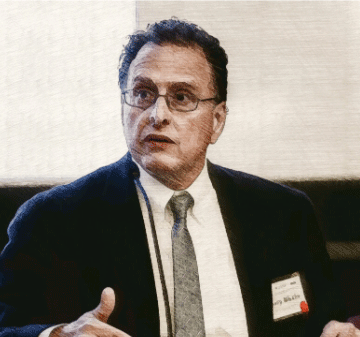
A feeling for gravity

How do we know which way is up?
The answer to this question is not quite as obvious as it seems. Unlike light or sound, our nervous systems have no way of directly detecting the pull of gravity. We know which way is up thanks to the results of gravity acting on our bodies — like where we’re making contact with support surfaces and the amount of pressure in those places — as well as from cues from other sensory systems.
For instance, consider a classic experiment that challenged the accepted and long-held notion that we have some internal way of detecting the line of gravity. In this study, people were underwater in an indoor swimming pool that was totally in the dark. This meant the water pressure was equal on all sides and there was no visual indication about the direction in which the surface of the water is located. What happened when they were asked to indicate which way was up?
It turned out that the subjects in this experiment could not correctly identify which way was up. Almost every one of them was wrong and a few were as much as 180⁰ wrong; that is to say, they pointed to the bottom of the pool, which was the entirely wrong direction. In this highly contrived situation, individuals are robbed of a frame of reference. In a deeply meaningful sense, they are removed from the world. Orientation becomes both meaningless and pointless. There is little or no reason to be aware of gravity and because its influence is minimized in such extraordinary conditions.
In the late 1980s, research scientists Thomas Stoeffregen and Gary Riccio devised an ingenious experiment to further investigate how we know which way is up. The results of their broader program of research formed the basis of a new approach to understanding how the nervous system uses information from the process of maintaining our balance to make it possible for us to orient to the invisible and ubiquitous frame of gravity as well as to visible frames of reference.
 On Monday, 22 June, at 8:00 AM Pacific time, I will be conducting an online interview with Dr. Riccio, a psychologist, engineer, and movement scientist who has worked extensively with NASA. We will delve into the details of this experiment and what it tells us about the relationship between coordination, balance, and orientation.
On Monday, 22 June, at 8:00 AM Pacific time, I will be conducting an online interview with Dr. Riccio, a psychologist, engineer, and movement scientist who has worked extensively with NASA. We will delve into the details of this experiment and what it tells us about the relationship between coordination, balance, and orientation.
We’ll be building on the conversations that we’ve had for the past thirty years — Gary was my doctoral advisor at the University of Illinois, Champaign-Urbana — about the intersection between attention, perception, and movement science from the perspective of Moshe’s method. One of the main questions we’ll investigate is how our method makes use of fundamental processes in the nervous system to facilitate neurophysical learning, in essence, the purpose of a nervous system.
This webinar is being offered on a donation basis. Registration is required but payment is entirely optional; you can pay as much or as little as you like.
We will be recording the interview and making it available afterward. So that we can inform you about how to access the recording, please be sure to register now.
 At the end of June, I start teaching The Human Frame (THF), the 2020 edition of my almost annual Awareness Through Movement® summer camp. This year’s course features ten weekly innovative ATM® classes done in a doorway, a neglected and ubiquitous resource that is available to everyone, a natural laboratory for neurophysical learning.
At the end of June, I start teaching The Human Frame (THF), the 2020 edition of my almost annual Awareness Through Movement® summer camp. This year’s course features ten weekly innovative ATM® classes done in a doorway, a neglected and ubiquitous resource that is available to everyone, a natural laboratory for neurophysical learning.
THF reveals blind spots, expands your movement vocabulary, and helps you take the possibilities you discover undiscovered int your everyday life. By harnessing your brain’s inherent ability to learn and change, these contemporary lessons make it possible to retune and refine your coordination, equilibrium, and orientation.
You have the choice of participating in traditional classes or in cutting-edge mini-workshops that utilize the advantages of online learning and provide individual coaching. To find out more, please click here.
Your thoughts?
Please let us know your perspective! Add your comments, reactions, suggestions, ideas, etc., by first logging in to your Mind in Motion account and then clicking here.
Commenting is only available to the Mind in Motion Online community.
Join in by getting your free account, which gives you access to the e-book edition of Articulating Changes (Larry's now-classic Master's thesis), ATM® lessons, and more — all at no charge whatsoever.
To find out more and sign up, please click here.
Please share this blog post
 This work is licensed under a Creative Commons Attribution-ShareAlike 4.0 International License
This work is licensed under a Creative Commons Attribution-ShareAlike 4.0 International License
This blog may contain one or more affiliate links. When you click on a link and then make a purchase, Mind in Motion receives a payment. Please note that we only link to products we believe in and services that we support. You can learn more about how affiliate links work and why we use them here


Responses